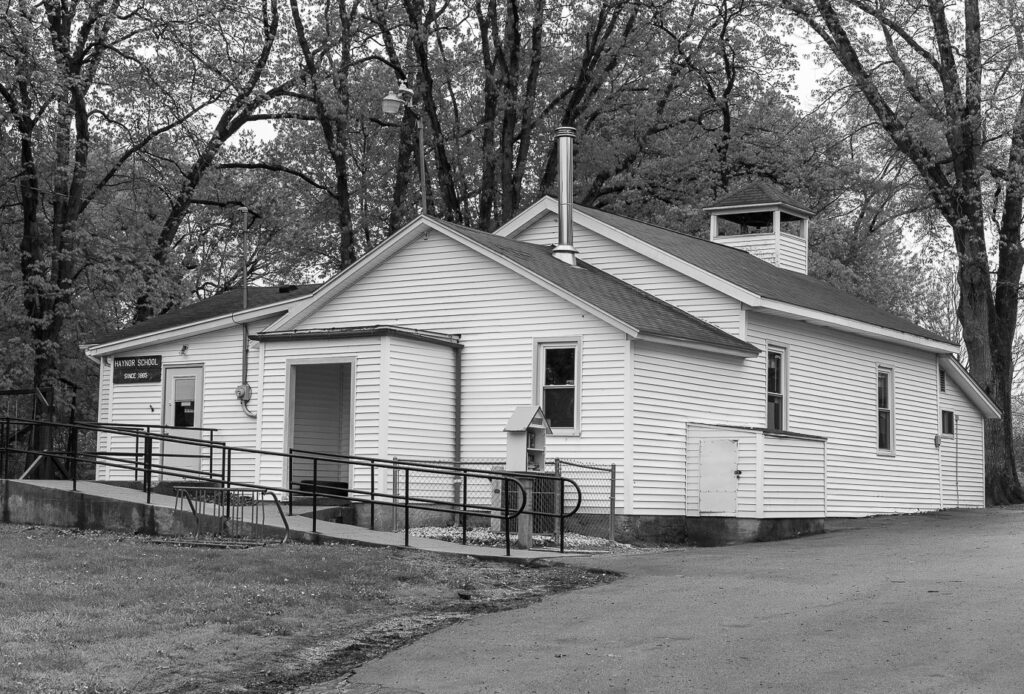by Joan Lamain
Rural schools were once a common sight in Michigan at the turn of the century. At one point, Michigan had over 7,000 one-room schoolhouses; now, less than 20 remain in Michigan’s lower peninsula, according to the Michigan One Room Schoolhouse Organization. Curious to know how these schools continue to serve students, I had the opportunity to speak with a teacher of a rural one-room schoolhouse, Kristin Guitar. Mrs. Guitar is currently teaching in the historic Haynor School in Ionia County in Michigan’s lower peninsula, which serves a unique niche in the public schools.
Tell me about Haynor School
“Haynor School was established in the year 1865 in Ionia County, which is in the Easton Township District 6 school district. Being in session for 160 years alone sets it into a category all its own. What once was a one-room schoolhouse expanded into a two-room schoolhouse and still educates children today. It’s a 160-year commitment to a strong education in a setting that is more like homeschool learning, with the rigor and structure of a large traditional school setting. Many parents today want their children to experience friends and activities of school, but not on the large institutional scale, so Haynor checks those boxes and provides a strong academic foundation with so much more individual attention.”
What makes it unique?
“We can educate the whole child. We are small in class size, so our students get so much more staff to student attention, such as 4 adults most of the week to 10 students currently, so it is 3 kids to one adult most of the time, along with an intervention teacher supporting any academic concerns. It isn’t just older students teaching younger students like in the past, but it does allow each student to grow at their own pace. For example, if a 2nd grade student is strong in math, we place them at the grade they test into so they remain challenged and engaged. If a student needs more individualized help in a subject area, we can provide individualized help to bring them to grade level and beyond.”
Why is it important?
“Since we can only enroll a maximum head count of 24 students, the staff gets to know the students like one of their own family members or children. Plus, the connections made with parents are unlike anything I’ve experienced in my own children’s education or in any other school I have worked in. The relationships with the school families are so much more intimate and rewarding for the staff, parents, and students. I can connect families to services or work with them to meet a child’s needs.”
Why does it work as a rural school?
“Basically, it’s our limited size and the small geography of our district. The district is only four square miles in size. Our students come from our township footprint but also from the surrounding districts. Mainly from families looking to put their children in a small, almost homeschool environment, but with the rigor of a traditional school.
How does your ISD/District support you?
“We are supported by the Ionia Intermediate School District for clerical, human resources, and accounting support, for which we pay an annual fee of $15,000 for those services. The ISD Superintendent and an assigned administrator who is our part-time principal in the event we need support on governing actions that ensure state guidelines are strictly enforced and followed.” Mrs. Guitar went on to explain that the support from the Ionia Intermediate District, even though Haynor School pays for their services, looks good on paper, and has not been working for equitable and financially sustainable decisions on behalf of Haynor and the other two rural schools.
This year, Haynor School celebrated 160 years of providing education and supporting the community. The school held a reunion on September 21, 2025, at the school. The event was attended by over 70 school families, many of whom span multiple generations. Mrs. Guitar said, “The stories of years past were priceless. It was amazing to get a first-hand account from former students on how much things have changed in school today.” She mentioned, with a sigh of relief and a smile, that she was very happy with indoor plumbing, as many of them used an outhouse.

